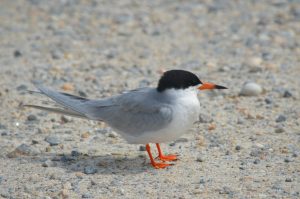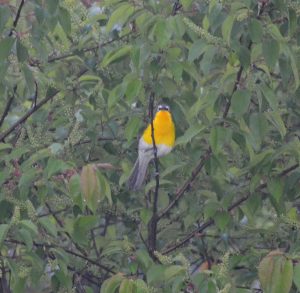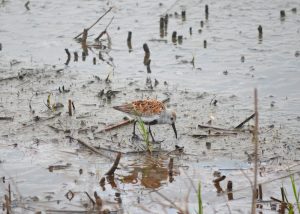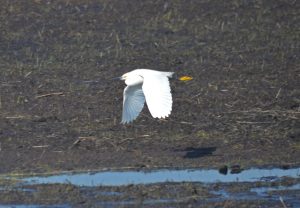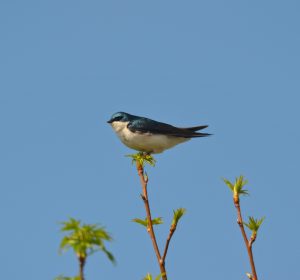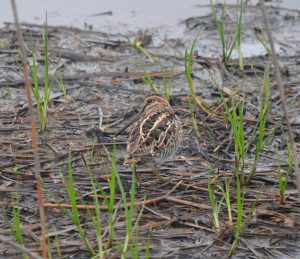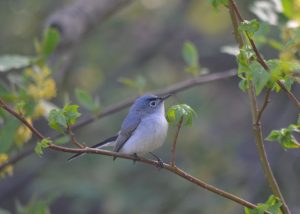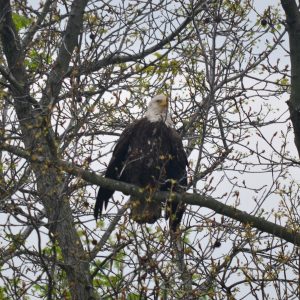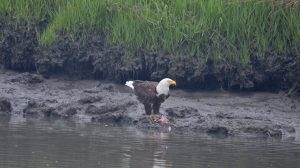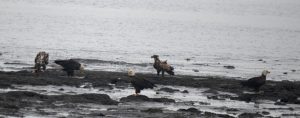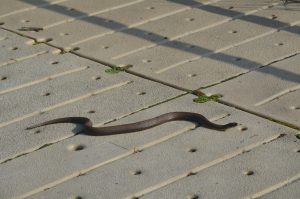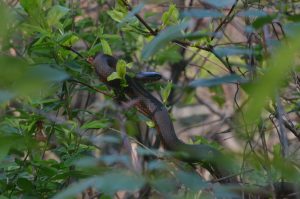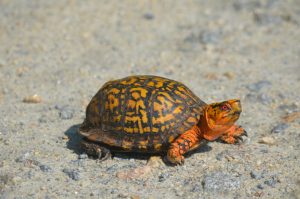The sun was just breaking through the heavy, morning mist when I arrived at Bombay Hook National Wildlife Refuge in Delaware. The time was 5:50 am, and I joined a short line of cars waiting for the gate to open. It was already quite warm for April, and the giant mosquitos were already buzzing at my window, licking their chops. My first bird of the day-a male Cardinal, singing his loud, clear song from the top of a shrub. This was my annual spring trek to this awesome wildlife refuge on the Delaware Bay, near Smyrna, DE, and as always, it did not disappoint.
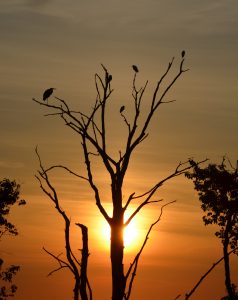 Bombay Hook was established in 1937, and protects one of the largest remaining expanses of tidal salt marsh in the mid-Atlantic region. The refuge’s 16,000 acres is located along the coast of Delaware, and is mostly marsh, but also includes freshwater impoundments and upland habitats that are managed for other wildlife. The name is derived from the Dutch “Bompies” or “Bompies Hoeck” meaning “little-tree point.” In 1679, Mechacksett, chief of Kahansink, sold Bombay Hook wetlands to Peter Bayard, an early Dutch settler. The price for the area was 1 gun, 4 handfuls of powder, 3 waistcoats, 1 anchor of liquor and 1 kettle. Today, it serves as a major migration stopover along the Atlantic Flyway, for thousands of waterfowl and shorebirds. In addition, many species of birds rely on the refuge for breeding. The refuge, a nationally recognized birding spot attracting birders from across the country, is designated a Globally Important Bird Area. Oh, and it’s one of my favorite destinations as well!
Bombay Hook was established in 1937, and protects one of the largest remaining expanses of tidal salt marsh in the mid-Atlantic region. The refuge’s 16,000 acres is located along the coast of Delaware, and is mostly marsh, but also includes freshwater impoundments and upland habitats that are managed for other wildlife. The name is derived from the Dutch “Bompies” or “Bompies Hoeck” meaning “little-tree point.” In 1679, Mechacksett, chief of Kahansink, sold Bombay Hook wetlands to Peter Bayard, an early Dutch settler. The price for the area was 1 gun, 4 handfuls of powder, 3 waistcoats, 1 anchor of liquor and 1 kettle. Today, it serves as a major migration stopover along the Atlantic Flyway, for thousands of waterfowl and shorebirds. In addition, many species of birds rely on the refuge for breeding. The refuge, a nationally recognized birding spot attracting birders from across the country, is designated a Globally Important Bird Area. Oh, and it’s one of my favorite destinations as well!
A sampling of birds at Bombay Hook NWR. From left to right, top to bottom. Forster’s Tern, Yellow-breasted Chat, Dunlin, Snowy Egret, Black-necked Stilts, Tree Swallow, Wilson’s Snipe, Blue-gray Gnatcatcher
The self-guiding auto tour allows almost everyone access to observe and enjoy so many birds, and other critters, that sometimes you don’t even know which way to look, since they can be all around you! If you like to see Bald Eagles up close, this is the place to go. My tally of eagles for yesterday (April 27th) was about 37! The unique aspect of the refuge is that it protects a variety of habitats including tidal marsh (fluctuating water levels), freshwater marsh, upland forests and meadows. Lots of different places for birdies to hang out! However, you do have be prepared for some of the refuge’s less desirable critters, such as ticks, mosquitos, and later in the summer “green head” flies. But I’ll deal with them any day if I get a chance to see one of the greatest migration shows on earth!
Bald Eagles and more Bald Eagles-juveniles (no white head or white tail) and adults. I even saw one outside the refuge, just sitting in a local farm field along the road.
The refuge is also home to many other animals as well, and I managed to run into a few of them during my trip there as well-literally! I walked right up on two different Northern Water Snakes-one basking on a dock that I nearly stepped on, and another that was wrapped around the branches of a shrub when I was looking for a warbler. Neither moved out of my way, so I simply snapped my photos and backed off. I also stumbled upon three other reptiles (all turtles crossing in front of me), a Red Fox hunting in a field, several deer and a Muskrat busy gathering food-and did I mention ticks and mosquitos? Yep, found lots of those critters too, or I should say, they found me!
Northern water snakes-hanging out on the dock, and in the bushes! Turtles included Eastern Box Turtle, Common Snapping Turtle and a shy Painted Turtle.
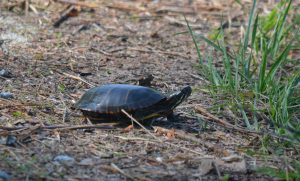 Bombay Hook NWR is a great place to visit in any season. But, if you find you have some time in the spring or fall, it can be especially rewarding. Grab your binoculars and come on down. You won’t be disappointed!
Bombay Hook NWR is a great place to visit in any season. But, if you find you have some time in the spring or fall, it can be especially rewarding. Grab your binoculars and come on down. You won’t be disappointed!
